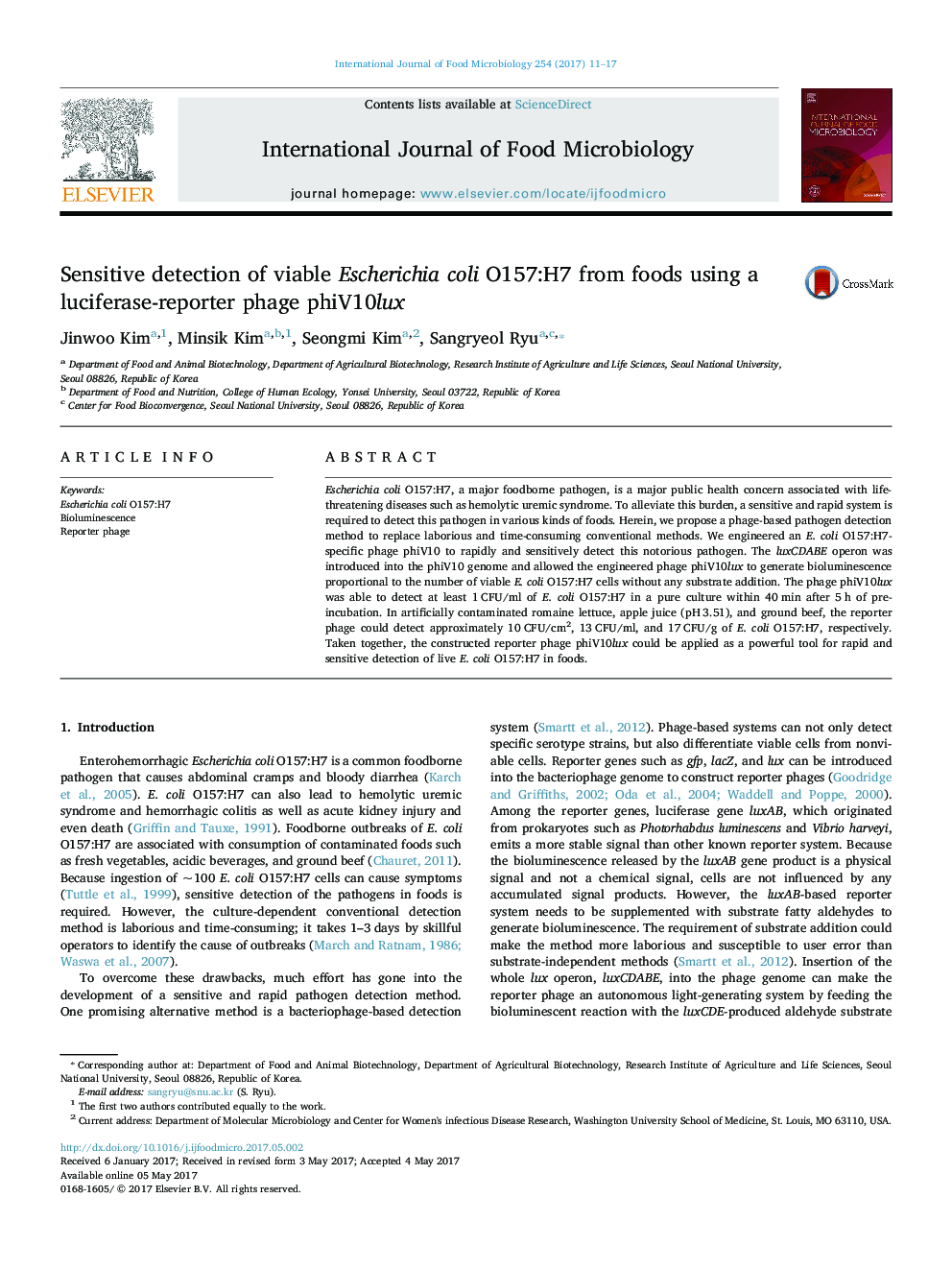| کد مقاله | کد نشریه | سال انتشار | مقاله انگلیسی | نسخه تمام متن |
|---|---|---|---|---|
| 5740689 | 1616529 | 2017 | 7 صفحه PDF | دانلود رایگان |

- We constructed a phage harboring the lux operon to detect Escherichia coli O157:H7.
- Phage phiV10lux detected only viable E. coli O157:H7 without substrate addition.
- Pathogen detection using phiV10lux was not disturbed by food components in real food.
Escherichia coli O157:H7, a major foodborne pathogen, is a major public health concern associated with life-threatening diseases such as hemolytic uremic syndrome. To alleviate this burden, a sensitive and rapid system is required to detect this pathogen in various kinds of foods. Herein, we propose a phage-based pathogen detection method to replace laborious and time-consuming conventional methods. We engineered an E. coli O157:H7-specific phage phiV10 to rapidly and sensitively detect this notorious pathogen. The luxCDABE operon was introduced into the phiV10 genome and allowed the engineered phage phiV10lux to generate bioluminescence proportional to the number of viable E. coli O157:H7 cells without any substrate addition. The phage phiV10lux was able to detect at least 1Â CFU/ml of E. coli O157:H7 in a pure culture within 40Â min after 5Â h of pre-incubation. In artificially contaminated romaine lettuce, apple juice (pHÂ 3.51), and ground beef, the reporter phage could detect approximately 10Â CFU/cm2, 13Â CFU/ml, and 17Â CFU/g of E. coli O157:H7, respectively. Taken together, the constructed reporter phage phiV10lux could be applied as a powerful tool for rapid and sensitive detection of live E. coli O157:H7 in foods.
Journal: International Journal of Food Microbiology - Volume 254, 2 August 2017, Pages 11-17